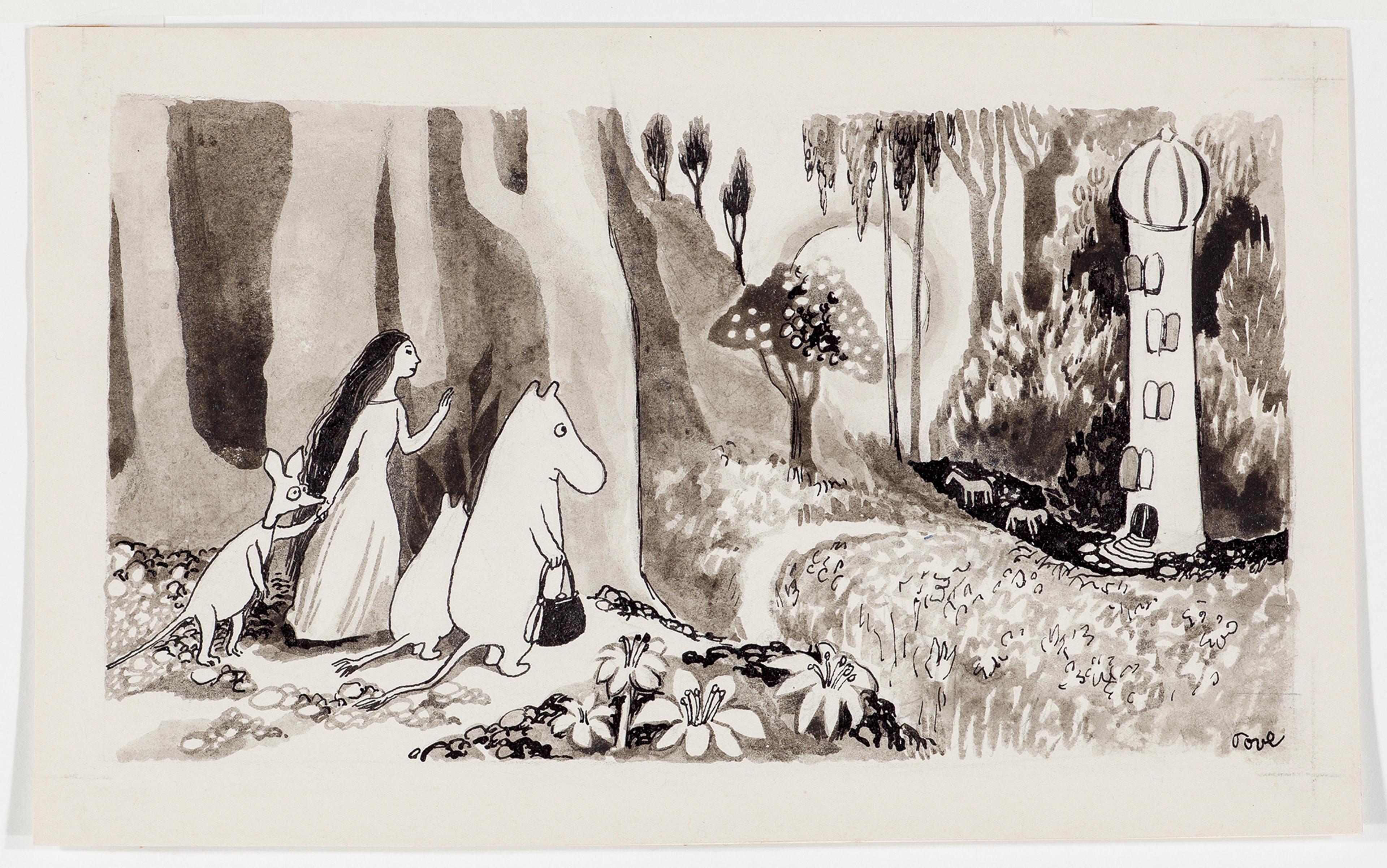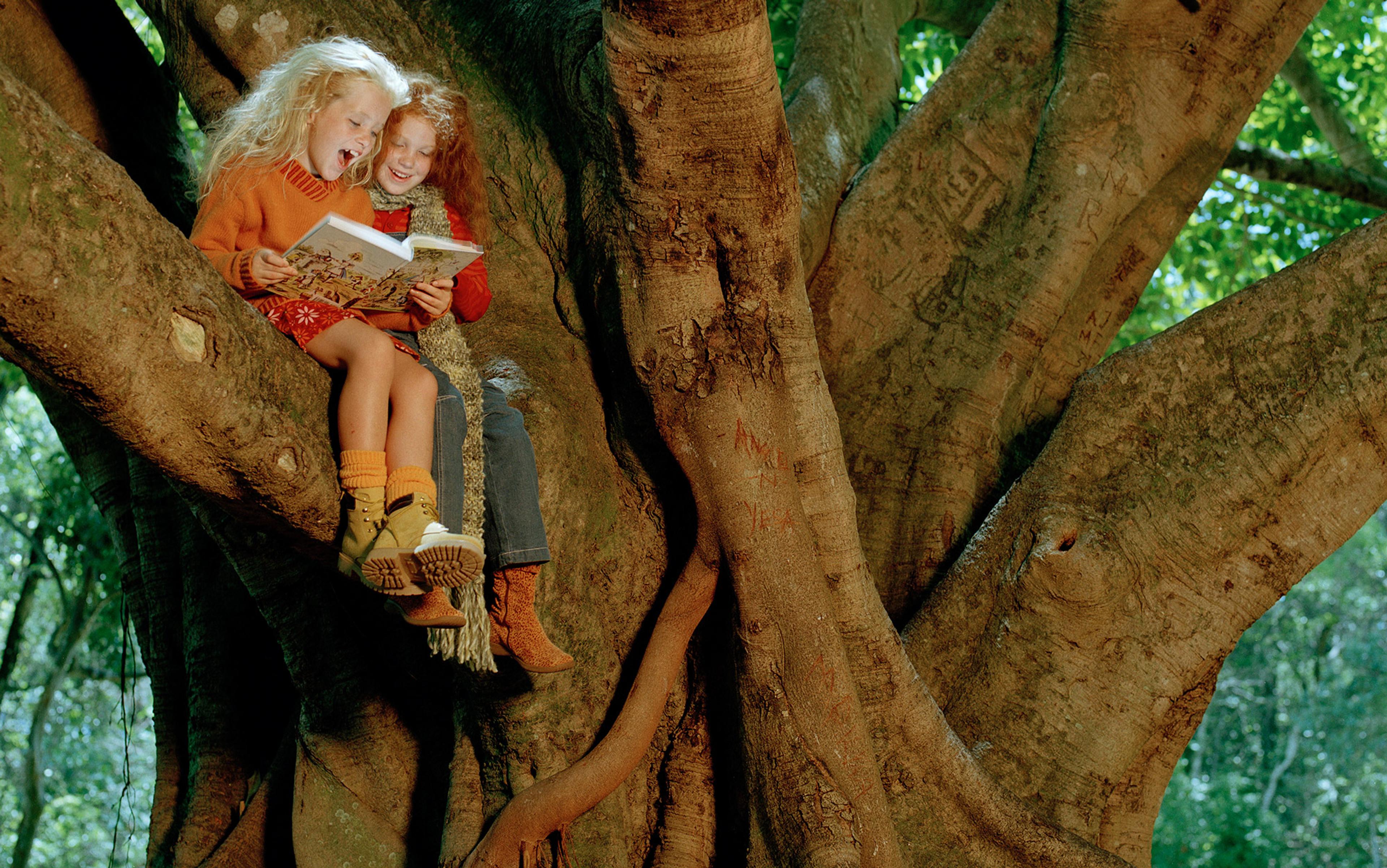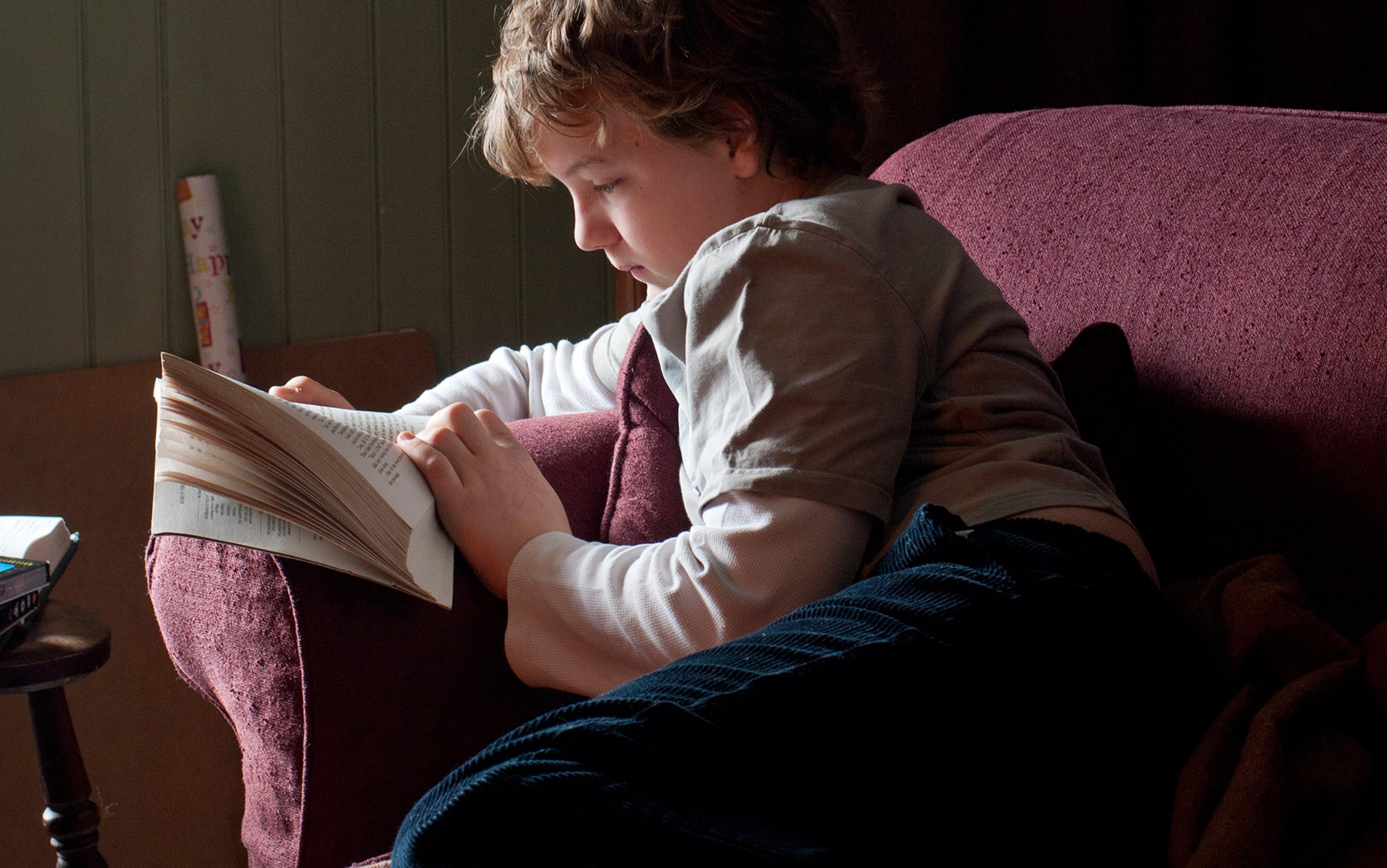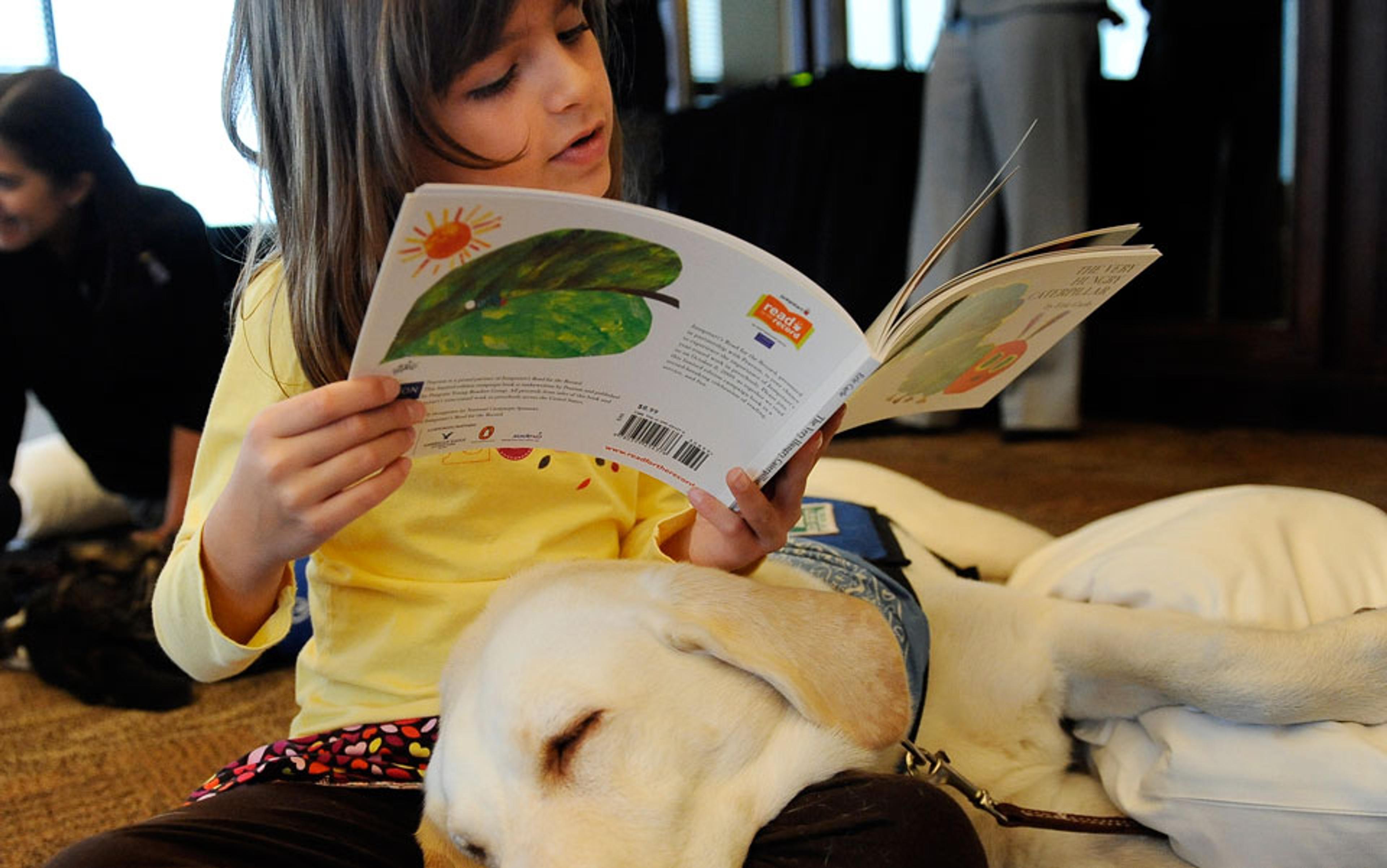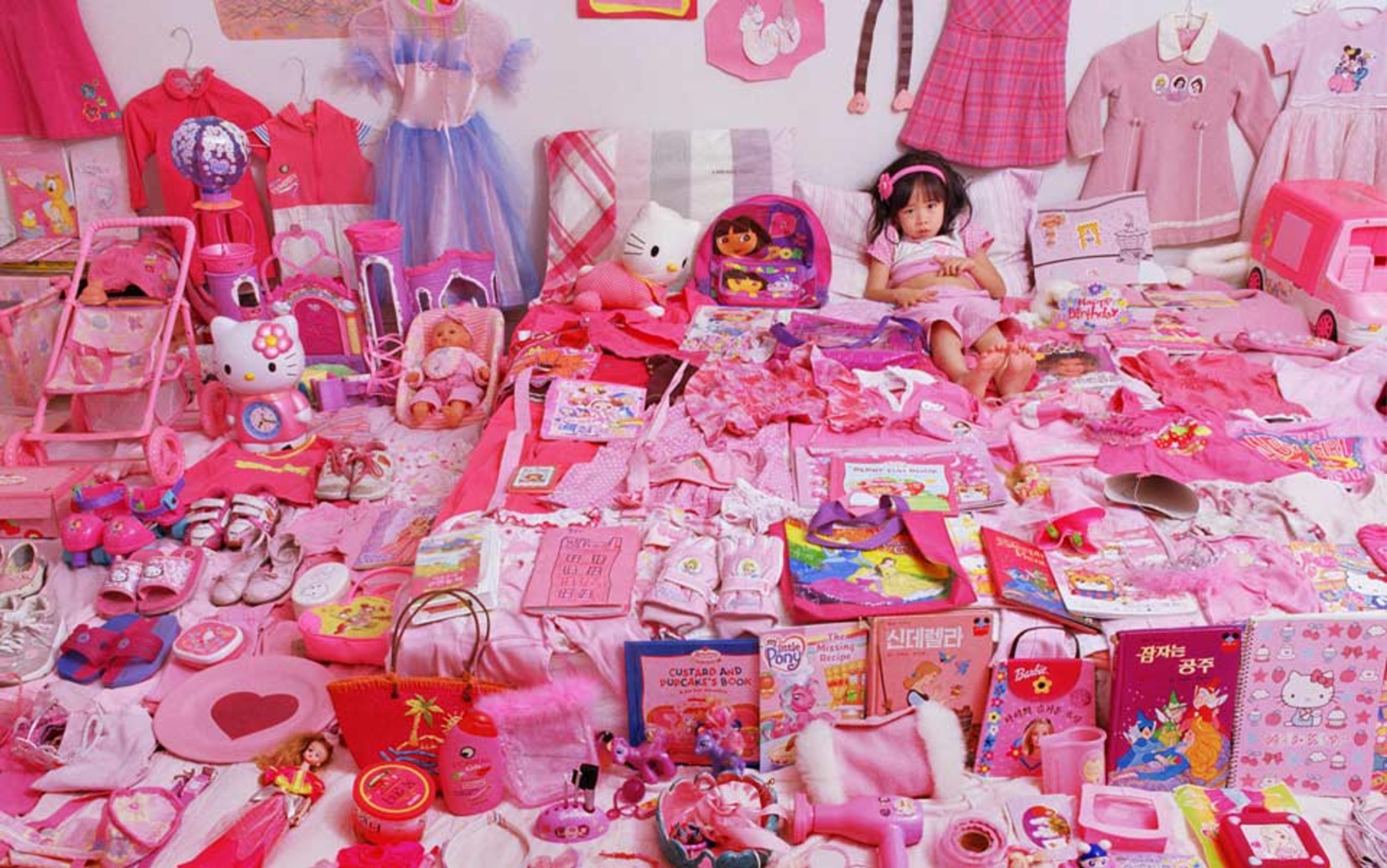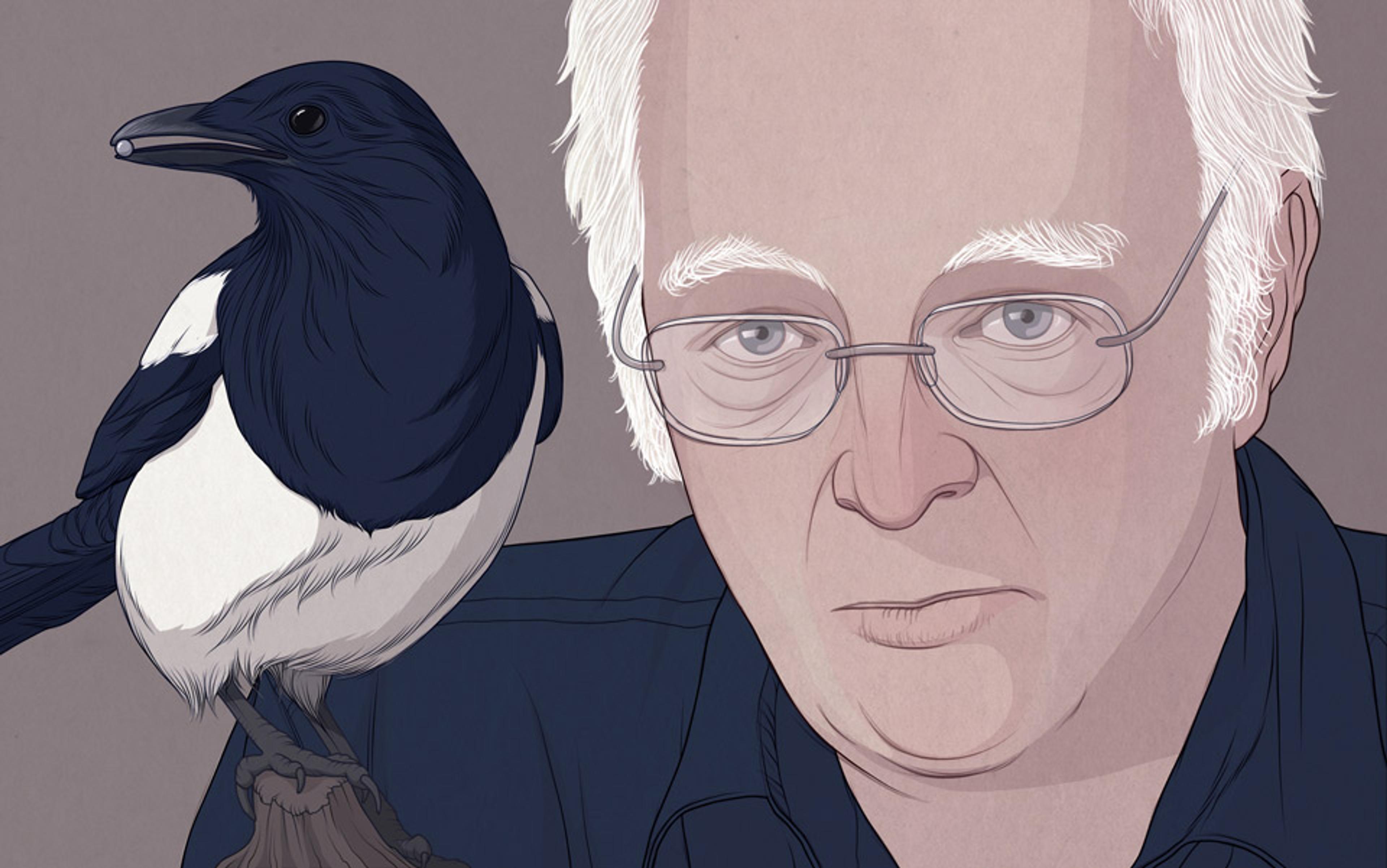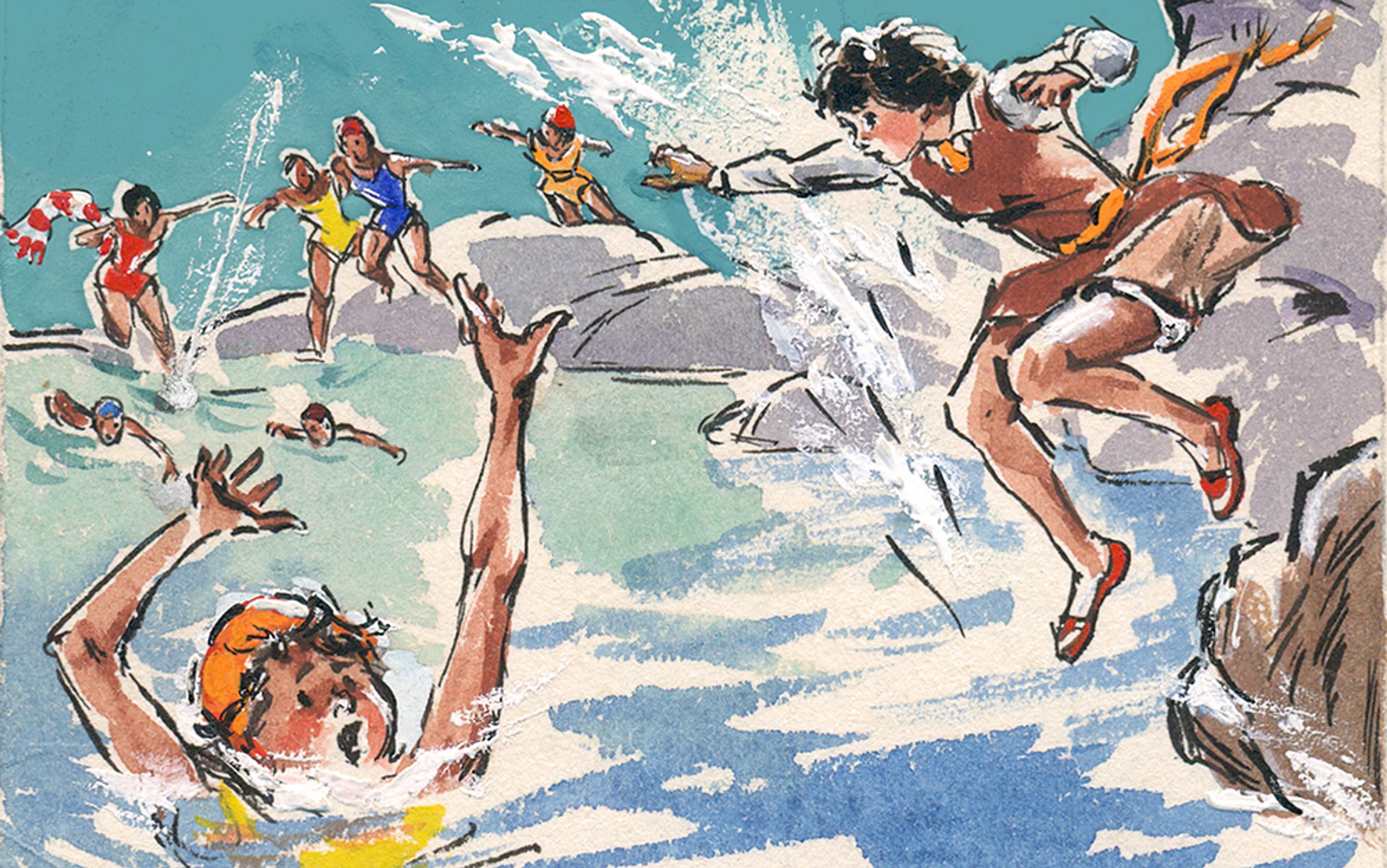In February 1944, Russian bombs smashed the windows of Tove Jansson’s art studio in Helsinki. ‘I knocked slivers of glass out of the windows,’ the author wrote in her diary. She was so depressed, she had been unable to paint for a year, and despaired that war was ‘making us smaller. People don’t have the strength to be grand if a war goes on for a long time.’
Some 250 miles away across the Baltic, another woman was documenting the same bombardment from the safety of her flat in Stockholm. ‘About 200 Russian planes had carried out a bombing raid on Helsinki,’ wrote Astrid Lindgren in her war scrapbook. ‘It’s awful to contemplate the fate of Finland.’
.jpg?width=3840&quality=75&format=auto)
The cover of the first edition of Pippi Longstocking (1945), illustrated by Ingrid Vang Nyman. Copyright the Astrid Lindgren Company
Aside from a seven-year age difference, the two had much in common: both had cut their hair short in their late teens and early 20s, and worn trousers and neck ties – the style of radical women in the age of jazz. Both had a youthful fascination with philosophers such as Friedrich Nietzsche. Both were committed anti-Fascists.
Lindgren’s job, monitoring mail for the Swedish security services, exposed her to heartrending letters from Jewish families, and her diary documented her anger at Nazi Germany. Jansson, with no children to look after, braved threats of prosecution from the pro-German Finnish government for the lacerating cartoons she drew of Adolf Hitler, published in the Leftist magazine Garm.
What matters most is that, from the start of the war, both began working on books for children. In November 1945, Lindgren’s Pippi Longstocking – with her bright-orange horizontal pigtails, freckles, odd-coloured stockings, back-to-front logic and superhuman strength – burst upon the world. A month later, Jansson’s gentle, enigmatic and adventurous Moomin family – with their small, kind eyes and strange hippo-like bodies – gingerly embarked on the first of their many quests.
Both authors were deeply marked by the experience of totalitarianism and violence in the Second World War. And both sought, in various subtle and not-so-subtle ways, to inoculate future generations against the conformity and power-worship that had made this human catastrophe possible.
As these books celebrate their 75th anniversary, they still dominate children’s literature in their home countries of Sweden and Finland, and are about to be introduced to a new generation. Heyday Films, the makers of the Paddington and Harry Potter movies, plans to remake Pippi, while the Swedish animation company Cinematic is remaking Comet in Moominland. With the world riven by pandemic, a looming environmental crisis and populist politicians who stir up division and hatred, these messages of freedom, kindness and tolerance are as necessary as ever.
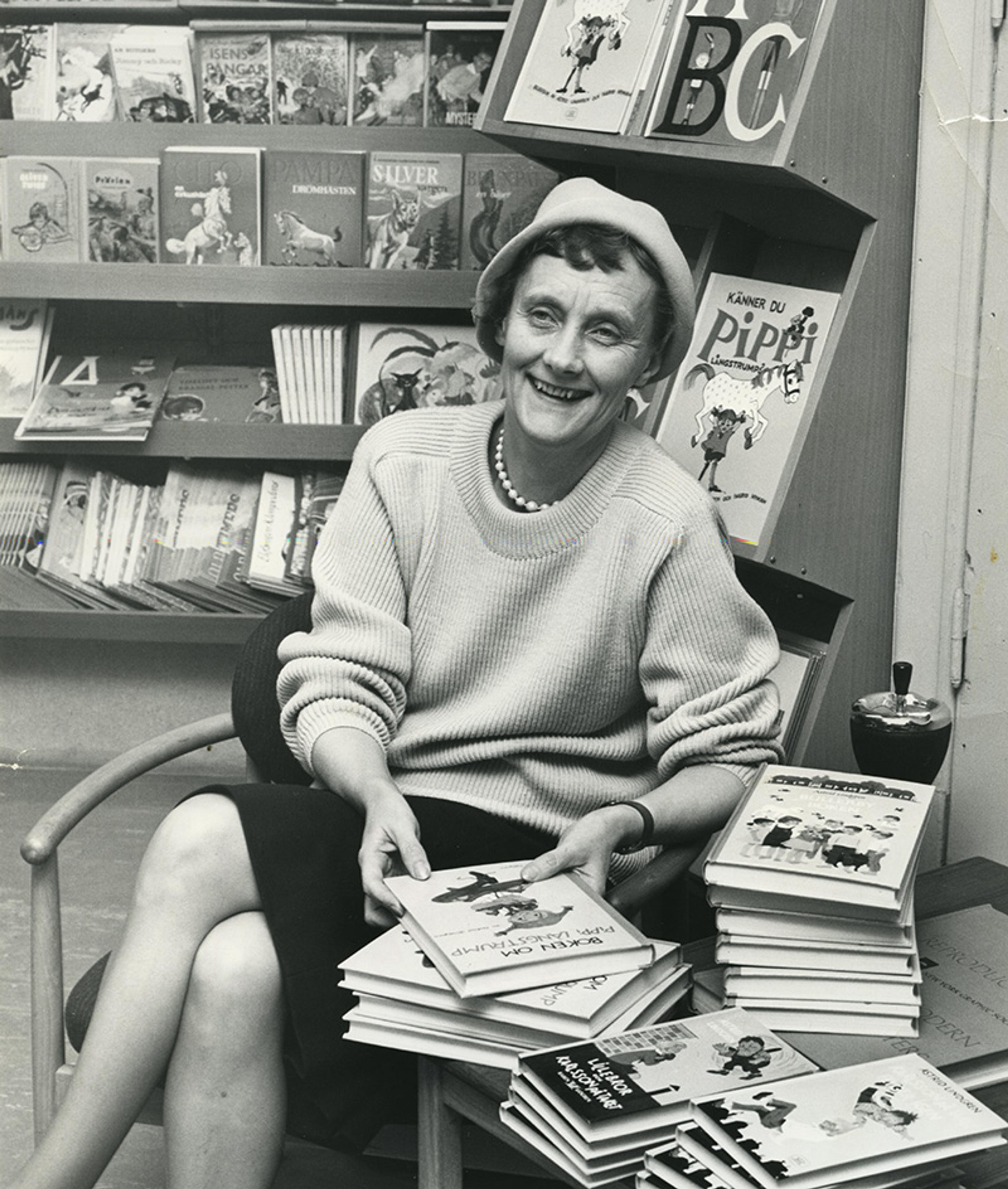
Astrid Lindgren at a book signing. Courtesy the Astrid Lindgren Company
‘It was the utterly hellish war years that made me, an artist, write fairy-tales,’ Jansson told an interviewer after her second Moomin book, Comet in Moominland (1946), came out. ‘I was feeling sad and scared of bombs and wanted to get away from gloomy thoughts.’
But for someone trying to escape the war, she brought an awful lot of it with her. The first time we meet young Moomintroll and his Moominmamma in The Moomins and the Great Flood (1945), they are refugees, crossing a strange and threatening landscape in search of shelter. Moominpappa, meanwhile, is absent, as fathers often were during the war.
In the space of just a few pages, the Moomins brave a dark wood at dusk and encounter glowing eyes, a strange mist and a swamp filled with underwater creatures, including a sea serpent, which nearly eats them. They then get caught at sea in a terrifying storm. And that’s before we even get to the flood of the title.
In the next book, the world is threatened by a comet that sucks the water out of the sea, leaving an apocalyptic landscape in its wake. Moomintroll and his friends Sniff and Snufkin meet a line of fleeing people, ‘some walking, some driving, some riding, and some even taking their houses with them on wheelbarrows. They all kept glancing fearfully at the sky and hardly anyone had time to stop and talk.’
As terrifying as all this is, we encounter it in a childlike world where, however bad things get, mother is able to make them right. ‘If only we can get home to mamma before it comes, nothing can happen,’ Moomintroll says anxiously when he learns the time that the comet will hit. ‘She will know what to do.’
‘Pippi represents my own childish longing to meet a person who has power but does not abuse it’
There is also a strong sense that the horror of war will make way for a better world. When the waters recede, Moomintroll and Moominmamma discover that the deluge has created the lush Moominvalley.
If echoes of war are everywhere in the first two Moomin books, they are absent from the Pippi Longstocking books, which are set in a 1940s from which war has been entirely removed. It is Pippi herself, the antithesis of a totalitarian leader, who is Lindgren’s response to the war.
In the covering letter that she sent with her first (rejected) Pippi manuscript to the publisher Bonniers, Lindgren described her heroine as ‘a little Übermensch in the body of a child’, using the Nietzschean concept at the centre of Nazi ideology.
During the war years, Lindgren had been horrified by the power amassed by someone as unsuited to it as Hitler. She described him as ‘a little, unknown German artisan’ who had become ‘his people’s nemesis and cultural destroyer’.
Her satire is at its clearest when Pippi takes on the circus strongman Mighty Adolf, leaving him to slink away humiliated. She also takes on bullies and tosses the drunk town thug who threatens a hotdog seller. She sends a policeman flying, and flicks a pair of hapless robbers onto the top of a wardrobe.
Lindgren later explained that ‘Pippi represents my own childish longing to meet a person who has power but does not abuse it.’
Jansson’s biographer Boel Westin, professor emeritus of children’s literature at Stockholm University, told me that the year 1945 is seen in the Nordic countries as ‘the golden year for children’s literature’. Along with Pippi and the Moomins, that was the year in which Alf Prøysen in Norway published his first short-story collection, launching a career that later included Mrs Pepperpot, a series that is still popular worldwide. And it was the year that Lennart Hellsing, still widely read in Sweden, published his first children’s book too.
After the war, the child represented the promise of something new, Westin said; the baby boom was peaking, and ‘There was a feeling that everything was possible.’ While the rest of Europe had been impoverished by war, neutral Sweden’s economy had forged ahead. Europe’s reconstruction led to a sustained economic boom, the proceeds of which the Social Democratic Party used to build a generous welfare state. As part of this, Sweden’s parliament decided to begin centrally funding kindergartens in 1943 (Denmark followed in 1949), in a policy heavily influenced by the ideas of the feminist sociologist Alva Myrdal, who wanted to free women by transferring many of the responsibilities for childcare to the state.
Meanwhile, in nearby Germany and Austria, there was a need for books to replace Nazi children’s propaganda, which included notorious texts such as Trust No Fox, depicting Jews as short, untrustworthy, unhealthy city dwellers who lived parasitically off hardworking Germans. ‘In the German parts of the world, there was an emptiness of children’s culture after the war,’ Lindgren’s daughter Karin Nyman, a literary translator from German to Swedish, told me. ‘When all the Nazi books and culture had been thrown away, there was a vacuum.’
In short, there was an enormous demand for new children’s writers. And rather than trying to indoctrinate these future citizens against fascism, the new generation of writers felt indoctrination itself was the problem. They favoured the ‘free schooling’ pedagogy of thinkers such as the Scottish educationalist A S Neill or the philosopher Bertrand Russell.
Hellsing put it most clearly in his book Reflections on Children’s Literature (1963): ‘All pedagogical art is bad art, but all good art is pedagogical.’ For him, literature for children should aim to entertain, enlighten and stimulate, just like that for adults. Past children’s literature had done too little of this, he felt: ‘Filled with the most noble motives, propagandising for all conceivable human virtues, it has naturally been difficult for it to at the same time satisfy our need for laughter.’
The Swedish academic Ulla Lundqvist cites an article from the early 1930s in Folkskollärarnas Tidning – the newspaper for public school teachers – which argued that, before entering school libraries, all children’s books should be examined to exclude ‘swearwords, harsh expressions, or images of the worst sides of human life’. ‘The tendency which struck me most in the books is moralism,’ she concluded after surveying other children’s books published in Sweden in 1945. ‘The protagonist is pretty much universally a practical, well-groomed, obedient, and often even God-fearing child.’
Pippi was less a role model than a sort of release valve
The thrill of Pippi is how all this turns around. She sleeps with her feet on the pillow, she rolls out cookie dough on the kitchen floor, and makes pancakes by tossing eggs – shells and all – into a bowl. She stays up late into the night tending her garden. She is a virtuoso liar, spinning tall and inventive tales about the peoples she has encountered in far-flung lands.
And when she drops in on a school class for a day, Pippi addresses the schoolteacher with ‘You, miss,’ using the informal du. This is particularly remarkable when you remember that, in the Sweden of 1945, children weren’t only expected to refer to adults with ni, the formal word for ‘you’, but also to address them by titles such as Herr Direktör, or Fru Professor. Pippi has none of that. When the teacher asks her what five plus seven is, Pippi retorts: ‘If you don’t know that yourself, you needn’t think I’m going to tell you.’
Later, when Pippi’s friend Annika wonders why she has to eat her porridge, Pippi responds: ‘Of course you must eat your lovely porridge. If you don’t, you won’t grow big and strong. And if you don’t grow big and strong, you won’t be able to make your children eat their lovely porridge.’
And when do-good locals try to put her in a barnhem (literally, ‘a children’s home’ in Swedish), Pippi retorts: ‘I already have a place in a children’s home … I am a child and this is my home.’
The Pippi books constantly kick against the ethos on which they are founded, the Social Democratic statist approach, and instead promote an anarchic individualism. Lindgren was aware that what she had written was borderline heresy. In her first covering letter to her publisher, she took care to point out that children wouldn’t wish to emulate her protagonist, but instead identify with Tommy and Annika, the well-brought-up children who are Pippi’s friends and neighbours.
Perhaps to her surprise, Pippi escaped criticism for a year before John Landquist, a prominent literature professor and critic, attacked the books as disgustingly amoral. ‘No normal child eats up a whole cake at a coffee party,’ he railed. ‘It is suggestive of a diseased imagination or of compulsive-obsessive behaviour.’
As the debate raged in Sweden’s newspapers, Lindgren was silent, but in interviews she consistently argued that Pippi was less a role model than a sort of release valve. ‘Pippi satisfies children’s dream of having power,’ she later wrote, ‘and I believe that somewhere in that is the key to her popularity.’
But Lindgren also had a deeper purpose. ‘I would like my story to spark in at least one child’s soul a lifelong disdain for the worst species there is: people of power who mean ill,’ she said of another book she wrote. For Lindgren, children’s literature, more than any other, had the power to form the future. ‘Nothing is more certain than that the world’s destiny is formed in children’s bedrooms,’ she explained.
On the face of it, the Moomins are as conventional as Pippi is subversive. Pippi lives alone, without parents, whereas the gentle Moomintroll’s adventures always end with a return to Moominmamma, in a world where love and mutual toleration reign. ‘I tried to tell the story of a very happy family,’ Jansson explained to an interviewer in 1983.
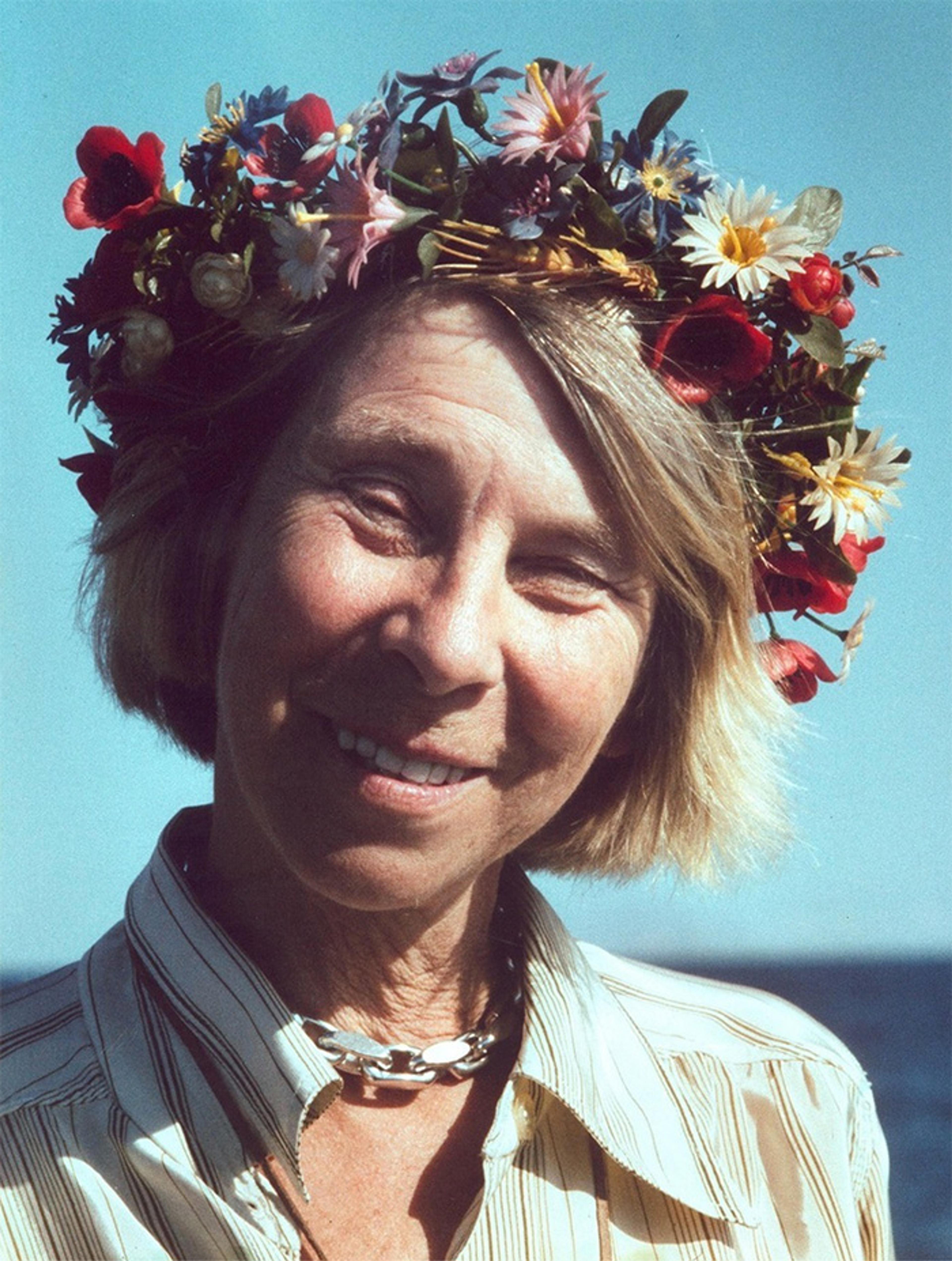
Tove Jansson pictured in the 1960s or 1970s. Photo by Per Olov Jansson.
The Moomins and their entourage are based in part on Jansson’s own bohemian family: her sculptor father and illustrator mother living and working together in the same house in Helsinki, children running around them and oddball friends dropping in. ‘They may seem conservative, but in fact they are not,’ Westin told me, arguing that the Moomins challenge the nuclear family with a sort of ‘free collectivism’. For instance, from the first pages of The Great Flood, Moomintroll’s new friends are all given a place. ‘They just move in, and then Moominmamma just makes the table bigger and they add some new beds.’
In the same way that love allows families to overlook members’ less appealing traits, the extended Moomin family tolerates everyone: not just Snufkin, the wandering poet-philosopher whose only possession is a harmonica, but also Sniff, Moomintroll’s great friend who is egotistical and cowardly, and Snorkmaiden, who is shallow and vain. There is even sympathy for the Groke, who radiates cold and spite, ‘the embodiment … of fear and rejection’, according to Tuula Karjalainen, another biographer of Jansson.
This message of inclusion is all the more remarkable when we remember that, during the war years, Jansson’s family was every bit as divided as many are today. Her father, Viktor ‘Faffan’ Jansson, was an enthusiastic supporter of Nazi Germany, enraging his daughter with political views that she described as ‘hair-raising’, including open antisemitism. Meanwhile, Tove and her mother, Signe ‘Ham’ Hammersten-Jansson, were earning money drawing illustrations for an anti-Nazi, Left-wing magazine.
The strain this put on the family is transformed into Moominpappa’s absence. He has ‘[taken] off with the Hattifatteners’, ‘who are forever wandering restlessly from place to place in their aimless quest for nobody knows what’. Moominpappa later quietly omits his infatuation with this strange, mindless crowd when he writes the story of his life, which was the approach taken by many Finnish supporters of Nazi Germany. When Moominpappa’s memoirs are complete, there is nothing in them at all about his wayward years with the Hattifatteners, much to Snufkin’s puzzlement.
No other children’s writer then was depicting gender fluidity and protesting the illegality of homosexuality
In the more Left-wing political climate of 1970s Sweden and Finland, both Lindgren and Jansson came under fire for being reactionary. The truth is, however, that – particularly in terms of gender – both were ahead of their time. To this day, it is hard to think of another female children’s character as strong, active and self-possessed as Pippi. In today’s world, where too many women and girls are made to feel bad about their appearance, Pippi loves the way she looks, red hair, freckles and all.
‘Adorable … adorable,’ she mutters as she’s dressing up in front of the mirror. ‘What’s adorable?’ Tommy asks. ‘I am,’ Pippi declares. When she sees an advert in the window of a pharmacy asking: ‘Do you suffer from freckles?’ she storms in and confronts the woman at the counter. ‘I don’t suffer from freckles,’ said Pippi, ‘I love them.’
The Moomins certainly appear to be more conventional. Moominmamma is always baking, cleaning, decorating and comforting. Meanwhile, Moominpappa indulges his every whim, at one point uprooting the entire family and moving to a lighthouse simply because he feels depressed. But in fact Jansson has delivered a feminist critique, reflecting anger at the position of her own mother, Ham, in relation to her father, Faffan.
‘I see how Faffan, the most shiftless and most short-sighted of us all, tyrannises the whole house,’ she wrote to a friend. ‘I see that Ham is unhappy because she has always said “yes”, smoothed things over, given in, given up her life and not got anything back except children.’
It is in their depiction of gender and sexual fluidity that the stories are most radical. Jansson herself had relationships with both men and women before finally settling, as she put it, on ‘the spook side’, with a female partner, the graphic designer Tuulikki Pietilä. Her love affair with the theatre director Vivica Bandler forms the absolute core of the plot of Finn Family Moomintroll (1948) – her third book in the series and her first international hit, published in English in 1950. Thingumy and Bob have a secret language and hide the King’s Ruby, which symbolises their love, in a suitcase. But the Groke, who represents the forces of repression and negativity, wants to deprive them of it. In the parody court that the Moomins hold, the Groke’s legal right to the ruby is contrasted with Thingumy and Bob’s moral one. In Moominland Midwinter (1957), Jansson brought Pietilä into the book as the character Too-Ticky; though referred to as ‘she’, Too-Ticky dresses in trousers and Breton tops, with short hair, a beret, and a knife on her belt.
This assault on social censure and laws against homosexuality went completely over the heads of Jansson’s young readers, and was missed (or perhaps just politely passed over) by her adult reviewers. I can think of no other children’s writer who, as early as the late-1940s and early ’50s, was depicting gender fluidity and protesting the illegality of homosexuality. And if any have done it since, none have done it so beautifully. If anything, today we face a backlash against decades of progress, with so much children’s literature marketing princesses, ponies and unicorn books to girls. A host of new, progressive books, meanwhile, seem like a return to the kind of moralistic approach that Lindgren was trying to escape. Books such as Good Night Stories for Rebel Girls (2016-), or the many volumes on the environmental crusader Greta Thunberg, might have all the right intentions. But they’re also about ensuring that our children have those opinions we want them to have. And few of them are much fun.
Pippi and the Moomins remind us that madcap humour and imaginative storytelling can convey humanistic ideas at least as powerfully as a more literal approach. But perhaps their most important message is that, however bad things get, it is always possible to imagine the world anew.
